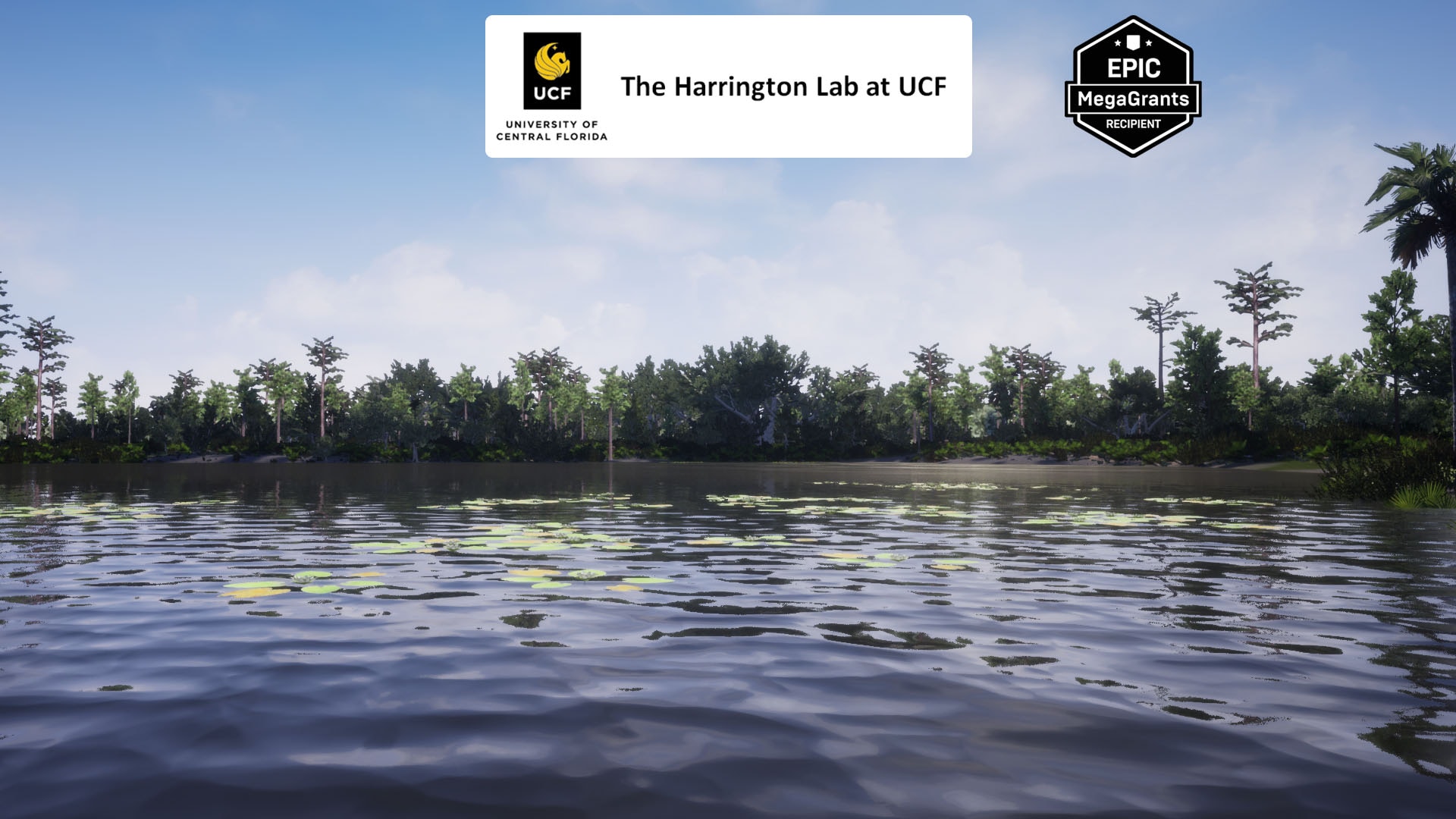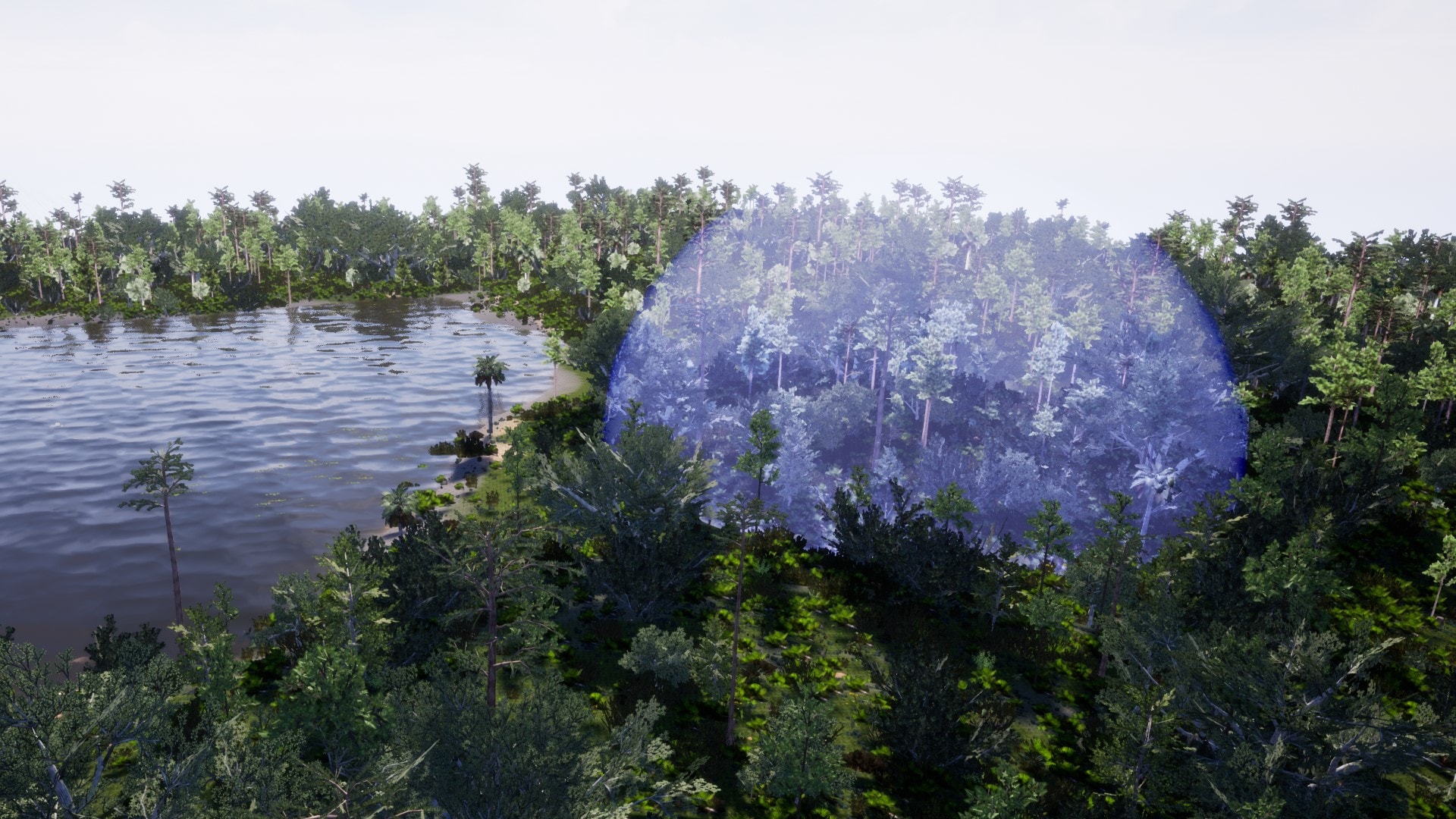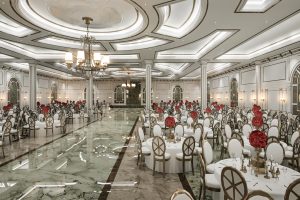Unreal Engine Subtropical Waterbody Habitat Brush UE8330


Content:
- This work was funded in part by a 2020 Epic MegaGrant: https://www.eurekalert.org/pub_releases/2020-05/uocf-egm051120.php
- Virtual Nature projects are interdisciplinary collaborations between the University of Central Florida (UCF) digital media researchers and botanists, biologists, and ecologists. Read more about this work at The Harrington Lab at UCF: https://virtualnature.org/research/
- Plant Field Guide: https://arboretum.ucf.edu/virtual/
- Plant 3D Model Atlas: https://sketchfab.com/VirtualUCFArboretum/models
- Check USDA Plant Hardiness Zone Map for correct locations:(https://planthardiness.ars.usda.gov/)
Features:
- Requires Unreal Water Plug-in (e.g. manually place each Waterlily on water surface)
- 34 AR/VR photorealistic, low-polygon plants
- Individual variations, LODs, wind and light effects, all made using photographs taken in the wild
- 126 unique meshes for use in Central Florida landscapes
- Editable wind material with leaf rustle
- Subsurface scattering maps for light transparency and reflection on leaf surfaces
- 6 ground materials for use in landscape painting and some weeds for ground surface noise
- 1 landscape for large-scale foliage painting (recommending brush size 4000)
- Preset foliage densities for quickly painting foliage on large landscapes
- 2 example natural communities/ecosystems created from plant inventory and plant distribution GIS data for Central Florida
Plant list:
Central Florida
- American Beautyberry
- Blazing Star
- Bracken Fern
- Chalky Bluestem
- Coastalplain Honeycomb
- Coontie
- Dahoon Holly
- Feay’s Palafox
- Fetterbush
- Flattop Goldenrod
- Florida Paintbrush
- Florida Tickseed
- Forked Bluecurl
- Goldenrod
- Hooded Pitcher Plant
- Lopsided Indiangrass
- Longleaf Pine
- Pond Cypress
- Prickly Pear
- Rayless Sunflower
- Reindeer Moss
- Sabal Palm
- Sand Live Oak
- Saw Palmetto
- Scarlet Calamint
- Scrub Rosemary
- Shortleaf Rosegentian
- Spanish Moss
- St. John’s Wort
- Tall Jointweed
- Titusville Balm
- Wax Myrtle
- Waterlily
- Wiregrass
About: These digital art 3D plant models were created by an interdisciplinary team of artists and scientists. Dr. Maria C. R. Harrington, Dr. Patrick Bohlen, Chris Jones, Zachary Bledsoe, Jennifer Elliott, Ray Jarrett, Amanda Lindsay, and John Guziejka. The content created for the environment was initiated to support a research investigation of beauty as information and an emotionally salient trigger used in design studies on immersive informal learning. The Virtual UCF Arboretum project is an augmented reality (AR) and virtual reality (VR) collaboration between The Harrington Lab in the Nicholson School of Communication and Media and the UCF Arboretum in the Department of Biology and the Landscape and Natural Resources, in the College of Sciences, at the University of Central Florida. The Epic MegaGrant funded the improvement of the models for use here and by the community. Research and software projects may be downloaded here: https://virtualnature.org/
The Harrington Lab at UCF, Digital Media Team
Dr. Maria C. R. Harrington: Assistant Professor, Director of the Project
- Zachary Bledsoe: Undergraduate Research Assistant: Team Lead, Environmental Artist, 3D Artist and Modeler, Unreal Engine Production Pipeline Lead, August 2017 – August 2018
- James Miller: Undergraduate Research Assistant: Lead Developer and Programmer, Unreal Engine, January 2018 – August 2018.
- Chris Jones: 2020 Epic MegaGrant contractor. Undergraduate Research Assistant: Lead 3D Artist and Modeler, Environmental Artist, and Unreal Engine, October 2017 – August 2018. https://chrisjones3d.com/
- Thomas Pring: Undergraduate Research Assistant: Programmer, Unreal Engine, HTC Vive, January 2018 – August 2018.
- Kellie Beck: Undergraduate Research Assistant: Arboretum Content Liaison, Graphic Designer, WordPress, January 2016 – August 2018.
UCF Arboretum Team
Dr. Patrick Bohlen: Director of Landscape and Natural Resources and Arboretum
- Jennifer Elliott: Assistant Director, Natural Resource and Arboretum Programs
- Ray Jarrett: Coordinator of Urban Forestry and Land Management Programs
- Amanda Lindsay: Senior Biologist
- John Guziejka: Biologist / Urban Forester
- Rafael Pares: Media Producer
Documentation:
Copyright © 2021, Maria C. R. Harrington, Chris Jones, and Patrick Bohlen, CC BY 4.0 Deed Attribution 4.0 International: https://creativecommons.org/licenses/by/4.0/
Licensed to the UCF Foundation, Inc. https://ucffoundation.org/
For any educational or non-profit use, please contact Dr. Harrington maria.harrington@ucf.edu
technical details
Technical Details:
Number of Unique Meshes:
- 134
Collision:
- Simple
Vertex Count:
- Each of the 126 meshes has variable vertex count including reduced hand-made LOD
LODs:
- Mid LOD + Billboards for all assets except for clutter (meshes tested for AR/VR runtime efficiency)
Number of Materials + Material Instances:
- 4 Master Materials
- 100 Material Instances
- 1 misc material
Number of Textures + Resolutions:
- 2048×2048 – 6
- 1024×2048 – 4
- 1024×1024 – 69
- 512×1024 – 4
- 512×512 – 78
- 128×128 – 2
Supported Dev Platforms:
- Windows YES
- Mac NO (Not tested)




